Author: Vollketten (with some suggestions by Captain Nemo)
The Okinawa Sherman
Of all the tanks in WW2 few could rivalry the sheer numbers produced, the number of front served in or the vast number of modifications carried out. Many of these modifications were on a very small scale so are not necessarily distinct or common enough to warrant a special vehicle. There is of course the battle for Okinawa for which modifications were extensive in both numbers and appearance.
Most people will have seen Shermans covered with sandbags in books or footage of the war. To cover an entire Sherman it was found to take about 170 full sandbags to cover an M4 adequately although up to 200 were used on occasion. Initially secured with wire mesh and later with welded steel brackets and was often done on a wide scale. The 14th Armored Division in Europe “systematically sandbagged their tanks prior to entering combat”. Estimate a sandbag at approximately 10kg and this adds a considerable 1.7 to 2 tonnes to the vehicle.
How effective were they? Well on the 28th July 1944 3rd Armored Group tested the effectiveness of this armour on an M4 using a Panzerfaust. As a result of the test a truck drove back to the landing beach to get more sand. (11)
In the pacific sandbags were sometimes placed on the rear deck to protect against antitank mines or satchel charges thrown onto the rear deck but overall the use of sandbags was found to improve the overall effectiveness of the vehicle armour against shaped charge warhead based weapons such as the panzerfaust but not make any noticeable difference against anti-tank guns.
Concrete was widely employed in some units often on the glacis and also in the Pacific as a layer against the sides of the tank cast against a layer of planks on the side of the tank. This was done by the Marine Corps where the planks left a void about 100mm wide against the sides which was then filled in as both a measure to improve the armour against the Japanese antitank guns but also to prevent the sticking of magnetic mines to the sides by Japanese infantry.
Other measures to protect against these mines included wire cages over the hatches and the US 750th Tank Battalion went so far as to put up to 150mm of concrete on their M4 tanks and even nails welded on.
Spare track sections were widely used in all theatres of the war by crews and provided some additional protection against kinetic energy weapons and a slightly greater stand-off distance for HEAT type weapons. In the Pacific the addition of steel track sections welded to the turret and sides was found to “reduce the effectiveness of the Japanese 47mm high velocity antitank guns”. These guns were a very real danger to the M4 where for example we have an account from the 193rd Tank Battalion in April 1945 where a single Japanese 47mm antitank gun knocked out 4 of the battalions medium tanks in a single day. (9)
This is ‘Agony’ still with its wading system knocked out and repeatedly penetrated by Japanese 47mm antitank rounds.
Side skirts for the M4 were at least trialled formally back in the US in 1943 copying the side skirts from the T14 Assault Tank and found to be of “dubious value in detonating APHE type shells, but that they will reduce track damage due to explosions of HE shells where those shells detonate against the skirting plates”.
Side skirts were also used on Okinawa either as fabricated steel panels like this:
Or as wooden planks fastened to welded-on steel frames. The goal was not so much protection against anti-tank rounds but as a measure to counter the insane bravery of the Japanese soldiers who could throw or place satchel charges or Type 99 magnetic mines against the hull.
Japanese Model 99 Magnetic Mine
Davy Jones was knocked out and burned after being hit by 3 Japanese 77mm shells. The crew survived that incident.
This vehicle also has two panels on either side of the glacis as well:
‘Cloudhopper’ was knocked out by a 47mm AT round through the side. (8)
“Track blocks had been welded on turrets and front slope plates in the staging area. However, during the operation it became necessary to weld track on all sponsons.“ (6)
“The planking on the sides is considered to have been effective against shaped-charges thrown at several tank so equipped….the planking was splintered or blown off entirely, but the armor plate was not affected” (7)
“No case is recorded in which the wooden skirts for the suspension system saved a tank. But inasmuch as the [Japanese] have shown considerable reliance on satchel charges thrown under the tank” (7)
“The practice of welding spare track blocks on the outside of the turret and on the front slope-plate….and on at least one occasion prevented a 47mm projectile, which hit a track block on a tank turret, from penetrating the armor” (7) In this account a second vehicle hit in approximately the same place by the same type of round but without track blocks added was penetrated and exploded inside the tank. (7)
The scale and scope of modifications
Armour modifications by the 4th battalion to their M4A3 tanks were: (8)
- Additional armour plate was affixed to the front part of the right sponson on 24 tanks mounting flamethrowers.
- Forty one tanks had spare track sections welded around the turret and to the front.
- Forty seven tanks mounted a spare bogie wheel welded to the front slope plate
- Fifteen tanks has a 2 piece sections of channeled steel sheet weleded to the sponsons and a 35mm section cut to shape and bolted to the channel irons.
- Three tanks had three sections of plywood installed on their sponsons filled with about 40mm on concrete bolted to brackets welded on to the sponsons and were also considered effective.
- Six tanks had 50mm thick timber planking bolted to brackets welded to the hull sides creating a ~75mm thick gap.
- Three further tanks used 12mm thick plywood in the same manner.
- Fifty four tanks carried the wire mesh cages around all of their hatches.
- Forty five tanks had the 76mm ammunition ready box on the floor of the turret basket removed and the 76mm ready racks installed permitting the carrying of 25 more rounds of 76mm ammunition.
- Ten tanks had their commandeers cupolas rotated 45 degrees clockwise so that the hatch opened to the rear instead of to the right hand side and thus prevented branches and wires etc was becoming snagged. Report recommended this be incorporated on all tanks.
- Thirty four tanks had 25mm diameter 225mm long rods welded to the front of the hull to make towing easier.
- Fifteen tanks has wooden plugs inserted into the M3 2 inch mortar barrel to prevent grenades being put in there.
- Sixteen tanks had the commanders periscope lengthened by about 50% to give increased vision.
- Eighteen tanks had their deck escape hatches cut in two hinging it to the deck armour and secured from the inside.
The improvisations were effective.
The 5th Battalion also modified their M4’s. Sheet metal was cut into plates welded to the sides of the sponsons. Angle iron was welded to the sponsons projecting 100mm from the sides and sheet metal was bolted onto this to create a false side. Other tanks used wooden planks for the same purpose. Some tanks used planks for side skirts and other had track blocks welded to the sides of the turret. Welding nails to hatches to prevent climbing, prying open hatches and magnetic mines from sticking or creating an air gap. Aircraft matting was also rigged over hatches in the same manner. Wire mesh stretched over flat surfaces of the tanks to make grenades roll off. Filled sandbags placed on top of the engine compartment “and saved several engines during the operation”. Spare bogies carried on bustles on racks on each side. Water tanks were fastened onto the rear decks to provide drinking water for accompanying infantry. Radiators were frequently damaged so armour was welded to cover the radiator section:
Once this additional armour was welded on the deep wading equipment was attached which was sheet metal. Removal once on land was facilitated by means of cutting torch and sledgehammer:
Overall combat performance for the M4A3 “was exceptionally good” with “little engine trouble …in 35 days of operation, and the much publicized fire hazard did not materialize” (8)
So what about putting it into the game?
Well this is my impression of what it shoud look like:
Statistics wise I would have the turret armour increased at the front (to account for the appliqué panels) by 20mm with a reduction in turret traverse of 1 deg/sec. Rear mounted water tank on hull rear is just visual with no armour value. If it is modelled as spaced armour it would prevent rearward gun depression and also allow the tank to shoot itself. It’s just as reasonable for this to be omitted completely. Also on the rear deck should be visual models of sandbags.
Side hull armour has two steel sections welded onto the sides (see ‘Agony’) adding 20mm in those two sections outside of which is the concrete and wood. The hull is now 300 mm wider (100mm of concrete + 50mm of wood on each side). How to model this is complicated along with the sandbags on the rear; I would simply see the sides being modeled as spaced armour 10mm thick, 140mm* from the original hull side which basically would have no effect on AP shells but a modest effect on HE shells. The wooden planking under the tracks is visualy distinctive and would show camouflage colours but only count as 10mm spaced armour. again this would have virtually no effect on AP shells but provide a very small benefit against HE rounds. I wouldn’t propose to add the full steel side skirts on the Sherman as this was not a widespread modification.
(* except over those appliqué armour panels where they would be only 120mm from the hull)
For the rear mounted sandbags I would like them ignored as ‘armour’ and simply see them adding some hitpoints to the engine module. On the front the wide pieces of sheet metal spaced on the outer edges of the hull front should be just 10mm spaced about 50mm from the hull. Also changed would be addition of wire mesh only the hatches and the 45 degree rotation of the commanders hatch. Under the rear (you should not be getting shot here but none-the-less) added armour as shown in the photo providing 10mm of spaced armour underneath.
A final visual change would be the use of the wide grouser tracks to reflect their real use on the vehicles in these battles without additional benefits unless the owner selects that equipment for the tank. Also an increase in the ammunition capacity by 25 rounds but with the newer ammo rack to have a quite low hit point rating making it more vulnerable and a commensurate reduction in the rate of fire to account for the tighter crew space.
All told I see the Okinawa Sherman as being a good looking medium tank which would appeal to American players in particular carrying a little more armour, stronger engine, and a lot more ammunition at a price of mobility and a delicate ammo rack.
Sources:
1. Second Memorandum Report of Proving Center Project #1919/AD810, 4th September 1943
2. WWII Gyrene http://www.ww2gyrene.org/tanks_image_gallery.htm
3. WW2 in colour http://www.ww2incolor.com
4. Japanese Tank and Antitank, US War Department, 1945
5. M4 Sherman, Hunnicutt
6. Special Action Report, Tank Support Annex , Southern Okinawa, First Tank Battalion, 4th July 1945
7. Combat After-Action Report, 5th Tank Battalion, Iwo Jima, 1945
8. Tank Warfare on Iwo Jima, David Harper, 2008
9. Mayo, The Technical Services, 462
10. Mayo, The Technical Services, 464
11. M4 Sherman at War, Steve Zaloga
12. Field Expedient Armor Modifications to US Armored Vehicles, Matthew Boal, 2006

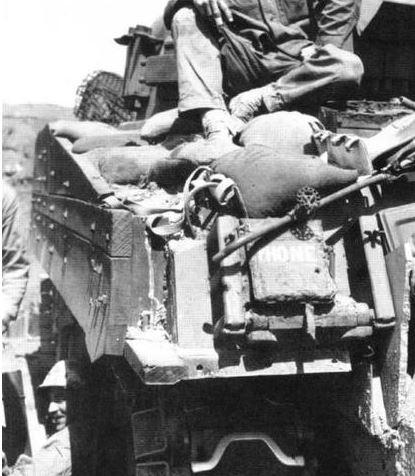



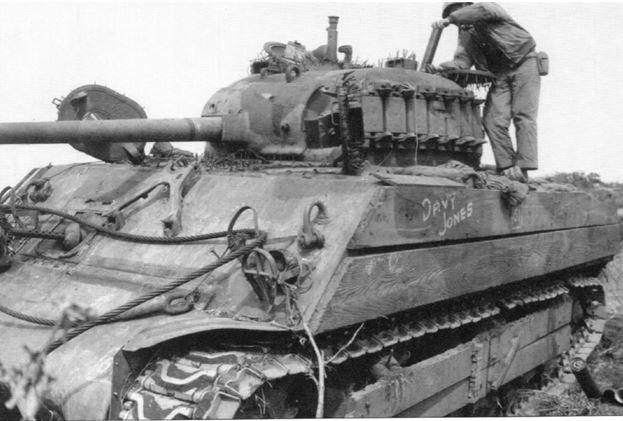
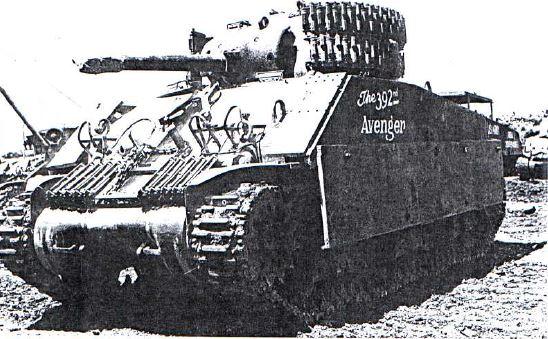
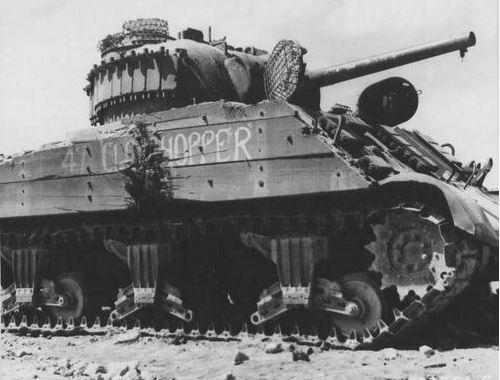

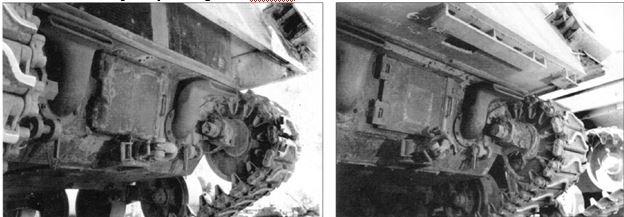


So this would be like a T14 on steroids ?
No, the armour would become extremely weak after many hits, I would imagine this ammo would fall off, or get damaged badly with Havok physics. So it would only act as a safety against the few first hits before the main armour becomes exposed.
Yeah…more sherman.
Firefly first.
Firefly won’t come anytime soon so you can forget about it.
Orly…
so… counting this proposal, how many Sherman variant that eligible for WoT?
Dozens. There were literally dozens of Sherman variants that could fit, belonging to various nations too.
Future articles then?
Off the top of my head:
Firefly (two models, likely hull upgrade), M4A4, M4A2 (Soviet and British), Yugo 122mm Sherman, M-50 and M-51 Super Shermans, French/Egyptian Sherman FL-10, French Sherman /w long 75mm gun in regular turret, Chilean 60mm HV Sherman (unlikely), T6 Sherman prototype (semi-confirmed, possibly multiple due to various gun options), M4 “Improved” (sloped armour Sherman, semi-confirmed), M4/T26 Sherman (semi-confirmed), T34 Calliope and Sherman Tulip (if we get rocket tanks), Sherman /w long-barreled 76mm M1 gun, Sherman Zippo and Crocodile (if we get flame tanks), Grizzly, Grizzly “Firefly”, Sherman /w F-34 (not sure if this is real), also M10 /w Japanese 105mm field gun.
i guess Calliope and Tulip won’t be on WoT (WT, in other hand…). Don’t see how Sherman 76mm will different with what already we have. And Sherman with russian 76.2mm… at least it proposed, SS or one of his minions already mention it passingly.
The T6 Sherman was even sent into Italy. Although there are number of T6 versions…
Well, we won’t have shortage of sherman variant.
Heck, we might able to made one into TD role right?)
Well, since I miss one tank (T92) for US technical engineer I would appreciate another US medium branch, because there are already two HT branches.
The autoloader branch is hardly a heavy branch, it’s light and medium branch.
It´s a Sherman, so hell yeah! :-)
I like the idea. On which tier should it be?
Definitely tier V. Its 75 mm gun which has only 110 dmg & 92 pen will be its biggest weakness.
6 probably
Very nicely put together guys, well done. I’d pick this up just for the historical look of it, if it were a premium. Thanks for the read.
Yup. Wooden armor would be very helpful against japanese infantry in the game.
While I really like this suggestion (much better looking than the fugly Ram II), can’t we just give the French an M4 Sherman? They are still missing a premium MT.
Firstly a quick apology, the damaged Sherman was called ‘Clodhopper’ not ‘Cloudhopper’.
Secondly I thought this was different enough and narrow enough in scope to be an interesting little collectors premium. Far from OP (the armour advantage is quite small; mainly against HE shells) but visually attractive for collectors of premium vehicles.
You guys did a great job, very much appreciated. Do these things ever get put before the guys “at the top” as it were (of WG)? Stuff like this is needed more and more in these days of fake tanks.
I’d love it if the thing didn’t have the stock 75mm like almost every other tier 5 American premium. Knock the rack, reload, and turret traverse if you have to. But of course, that’s unfeasible in quite a few ways other than balance.
It’s a 76mm.
I should add a proviso. The copy of the report I have shows what appears to be 76mm listed but as correctly noted the images show a 75mm gun.
Oh. I noticed there were a few references to 76mm ammunition in the article, but figured between the image and premium balance it probably wasn’t very doable.
If the Okinawa Sherman was delivered as recommended, I’d buy it in a heartbeat.
I would buy it.
I don’t give a f about new american medium premium tank. So those “possible premium tanks” for medium lines are in MY opinion a) for nothing, b) only ideas without – actually – reason to implement them. All I need is a premium tank destroyer. Count with me. Germans: two heavy tanks lines – one premium heavy (I am excluding B2); two medium tanks lines – Panther/M10, T-25 (I am excluding the Pz thing because it has only like 3 crew members, can’t train the whole crew); two TD lines – two premium vehicles (DMax has at least five crew members if I’m not mistaken). Soviets: two heavy tanks lines – IS-6, KV-5; two TD lines – two premium vehicles (okay, SU-100y is weird with the gunners and SU-122-44 can’t train the whole crew at all); two medium tanks lines (with three tier 10s) – so far only Matilda BP, but T-44-85 coming soon. British have two premium heavies for one line, one for TDs, French one premium heavy for one line, then they have the OP FCM PaK 36 or whatever its name is to train the TD crew, Chinese have all three lines covered with premium vehicles, Japanese have their own premium vehicle to train the whole crew in… But ‘Muricans have like two premium heavies for “one” line (T57 hvy is actually weird cos it comes directly from the medium line), they also have two premium mediums for two lines (that’s ok), but they have no fucking premium TD for TWO lines. And the most fucked up thing is that you basically, if you don’t pay attention, end up having a fresh new loader on tier 10s. &@Đđ[€$đ !!! Shut up, Wargaming, take my money and introduce an american premium TD.
Rather then complain to unholy hell why don’t YOU just suggest an option for an premium American TD instead?
Is it really THAT difficult?
I’d much rather see the M4A3R3 “Zippo”
Flame thrower right next to the Main gun.
http://www.battletanks.com/images/M4_w_Flamethrower-1.jpg
More then a few people would want to see flame tanks… but I think the FPS drop would be like the tested smoke rounds… horrible.
source on the smoke rounds?
Older QA from about a month ago. Somebody asked about Smoke rounds again.
They should talk to Gaijin about licensing their engine, I hear it handles smoke effects well. :trollface:
Of course it does, it’s for a dumbed-down version of a simulator. Planes look funny when they get damaged and don’t smoke.
Overall combat performance for the M4A3 “was exceptionally good” with “little engine trouble …in 35 days of operation, and the much publicized fire hazard did not materialize” (8)
I think all navy Shermans were diesel.
Marines made extensive use of the diesel M4A2s, and were afraid when they found out they were getting replaced. The M4A3 was indeed gasoline.
Many tanks in the war had similar things done, Germans did it, Soviets did it, Americans did it. Could make a good few articles on the things done to various tanks.